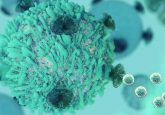Trial uses unique three-treatment approach for treating pancreatic cancer

Researchers at the University of New Mexico Comprehensive Cancer Center (UNM; NM, USA) have established a new clinical trial to try and help pancreatic cancer patients undergo surgery to remove their tumors. It is hoped that this approach will extend survival in these patients.
Itzhak Nir of the UNM Comprehensive Cancer Center commented: “Only 20% of patients ever make it to surgery, which is the only way to cure someone of this cancer.” Nir elaborated that less than 5% of patients whose tumors cannot be surgically removed survive in excess of 5 years.
The new clinical trial utilizes an aggressive treatment approach. “This clinical trial utilizes some of the best aspects of what we’ve learned so far with chemotherapy and radiation,” explained Gregory Gan, of the UNM Comprehensive Cancer Center, “It combines these with a new and exciting therapy called immunotherapy – a treatment which harnesses the body’s immune system to help with fighting cancer.”
“This clinical trial uses innovative therapies and a unique approach,” added Olivier Rixe of the UNM Comprehensive Cancer Center. “We are one of the few centers to offer this clinical trial and one of very few centers that can combine the technologies that this trial requires.”
The trial combines FOLFIRINOX and stereotactic body radiation treatment with the immunotherapeutic agent algenpantucel-L from NewLink Genetics (IA, USA). Previous studies have shown that FOLFIRINOX and stereotactic body radiation are effective when administered individually to shrink tumors sufficiently to allow for surgical resection. The current trial is the first time all three treatments will be used together to treat patients.
“The hope is that the combination of the most potent chemotherapy, radiation therapy, and immunotherapy will help make patients who were previously considered non-surgical able to undergo curative surgery,” explained Gan. “This trial combines the best of what we know.”
Source: UNM press release





